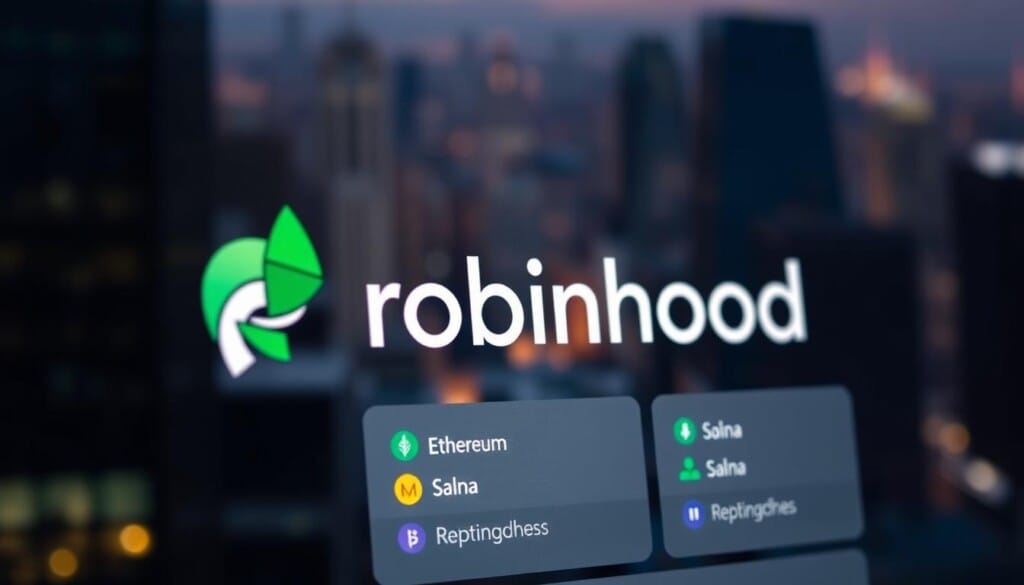Robinhood Crypto Staking: A New Power Move in Retail Finance
Robinhood crypto is entering a new phase—one that goes beyond trading and deep into the mechanics of decentralized finance. On July 10, the retail investing giant launched Ethereum (ETH) and Solana (SOL) staking for U.S. users with a minimum entry of just $1. But beneath the surface of this bold announcement lies a deeper play: Robinhood is reshaping its crypto identity—from a trading app into a full-stack Web3 financial platform.
This isn’t merely about earning passive rewards. It’s about access, evolution, and a company positioning itself for crypto’s next chapter.
A $1 Onramp to Ethereum and Solana Staking
Staking on Robinhood is now as simple as tapping a button. Users can begin staking Ethereum and Solana with minimal amounts, no technical knowledge, and no need to manage validator nodes or cold wallets.
Why Staking—and Why Now?
The move comes as the crypto market transitions from speculative frenzy to utility-driven growth. With crypto winter still casting a long shadow, staking offers an appealing alternative: steady, yield-generating participation in blockchain networks without active trading.
“We’re excited to bring Ethereum and Solana staking to our U.S. customers,” Robinhood stated. “It’s a big step in expanding our crypto experience.”
The timing is critical. As investors look for safer, long-term strategies, Robinhood crypto staking could offer both utility and retention in a cooling market.
Behind the Tech: How Robinhood Makes Staking Simple
While Ethereum staking usually requires 32 ETH to run a validator node, Robinhood bypasses that barrier by pooling user funds and managing the backend infrastructure. Rewards of up to 5% are distributed proportionally, with Robinhood retaining a portion of the earnings.
Solana staking is even simpler. Users delegate SOL, and Robinhood automatically handles validator selection. Estimated yields range from 5% to 7% annually, with no lock-up or withdrawal minimums.
Feature Comparison: Robinhood vs. Competitors
| Platform | ETH Rewards | SOL Rewards | Fees | Min. Stake |
|---|---|---|---|---|
| Robinhood | 4–6% | 5–7% | Implicit* | $1 |
| Competitor A | 5–8% | 6–9% | 1% | $10 |
| Competitor B | 4–7% | 5–8% | 0% | $100 |
*Robinhood retains a portion of rewards rather than charging a visible staking fee.
This ease-of-use approach aligns with Robinhood’s broader brand: removing friction for retail participation.
The Bigger Play: Robinhood’s Crypto Expansion Strategy
What began as simple crypto trading has evolved. From wallets to staking, Robinhood is slowly building a Web3 ecosystem for the average investor.
Signs of a Broader Crypto Vision
Recent developments suggest that Robinhood is thinking beyond just coins:
- Acquisition of crypto infrastructure companies
- DeFi wallet integrations
- Potential plans for tokenized stocks or NFTs
The platform may be laying the foundation for a future where it serves as a hybrid between a traditional brokerage and a decentralized finance (DeFi) hub. According to CoinDesk, Robinhood’s crypto wallet saw substantial growth in 2023—evidence that users want more than just trading.
Regulatory Terrain: Risk or Opportunity?
Despite its user-friendly rollout, Robinhood’s crypto staking move enters murky legal waters. The SEC has increasingly scrutinized staking services, alleging they may qualify as unregistered securities offerings.
Legal Questions on the Horizon
Key regulatory concerns include:
- Do staking rewards count as investment contracts?
- Are disclosures about yield and risk adequate?
- How is user custody handled?
Robinhood has had its run-ins with regulators in the past, making it likely this staking product was thoroughly vetted. But as legal pressure mounts—like with Kraken’s $30M SEC settlement in 2023—the platform may still face future inquiries. Read more from the SEC’s official release.
Network Impact: More Stakers, More Security
Lowering the barrier to staking could have serious implications for Ethereum and Solana. By onboarding thousands of small-scale users, Robinhood crypto may dramatically increase validator participation and network security.
That kind of network effect could help stabilize token prices over the long term and reinforce the credibility of Proof of Stake systems.
FAQs — Robinhood Crypto Staking
What is Robinhood crypto staking?
Robinhood crypto staking allows users to earn passive rewards by locking up ETH or SOL, which Robinhood then uses to help validate blockchain transactions on their behalf.
How much can I earn staking on Robinhood?
You can earn estimated annual rewards of 4–6% for ETH and 5–7% for SOL, though returns may fluctuate based on network conditions.
Is there a minimum amount required to stake?
No. You can start staking with just $1, making it one of the lowest entry points in the industry.
Are there any fees?
Robinhood doesn’t charge an explicit fee, but it retains a portion of the staking rewards.
Can I unstake anytime?
Solana is generally quick to unstake. Ethereum may have delays due to the network’s withdrawal queue system.
Is staking available in all U.S. states?
Most states are supported, but some may be restricted due to regulatory issues.
Will Robinhood support other cryptocurrencies for staking?
Possibly. If the platform continues to expand its staking services, coins like Cardano (ADA), Polkadot (DOT), or Avalanche (AVAX) could be next.
Conclusion — Robinhood’s $1 Staking Is a Signal, Not a Feature
Robinhood crypto staking represents more than just a new button in the app. It’s a bold shift in the company’s strategy—one that democratizes DeFi, simplifies on-chain participation, and positions Robinhood as more than a trading gateway.
If this strategy succeeds, it won’t just benefit Robinhood. It could normalize crypto staking for millions of new users and push other platforms to follow suit. In the race for the next generation of retail finance, Robinhood just made a significant move—and the market will be watching what it does next.

